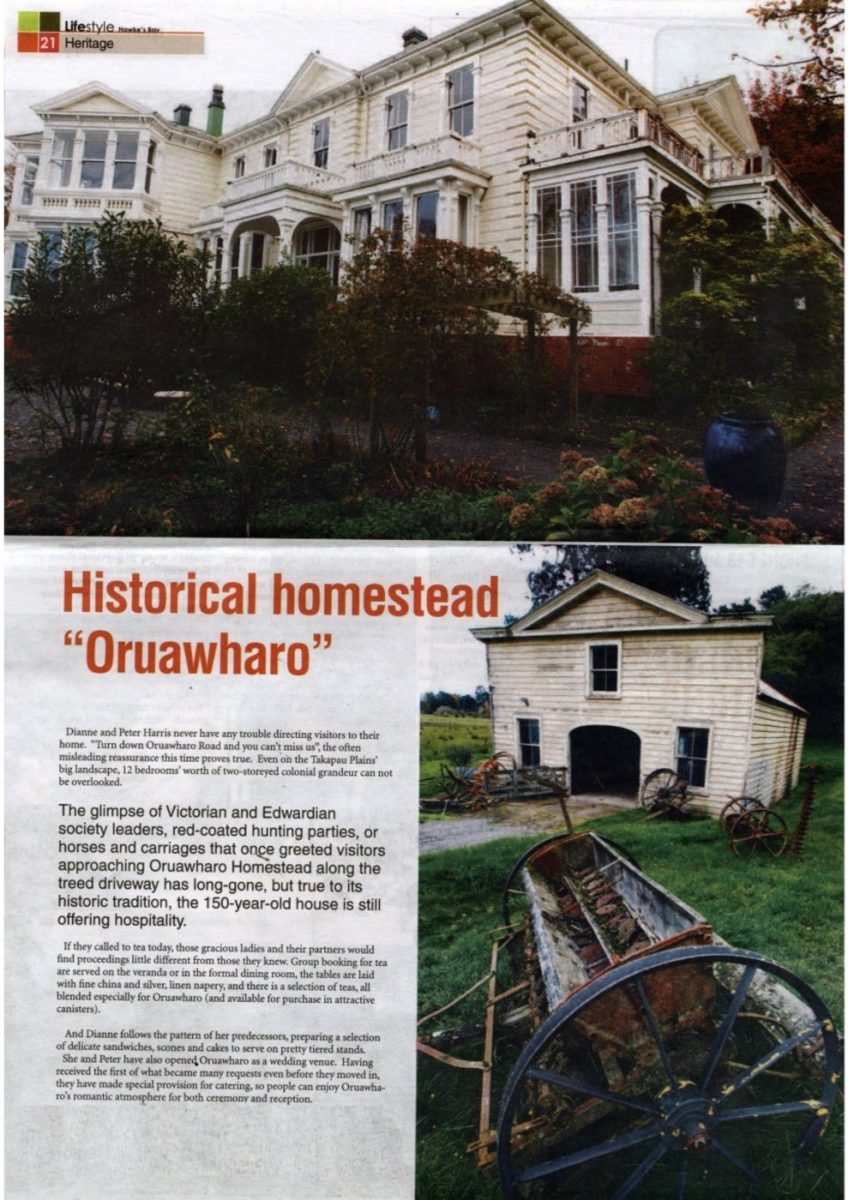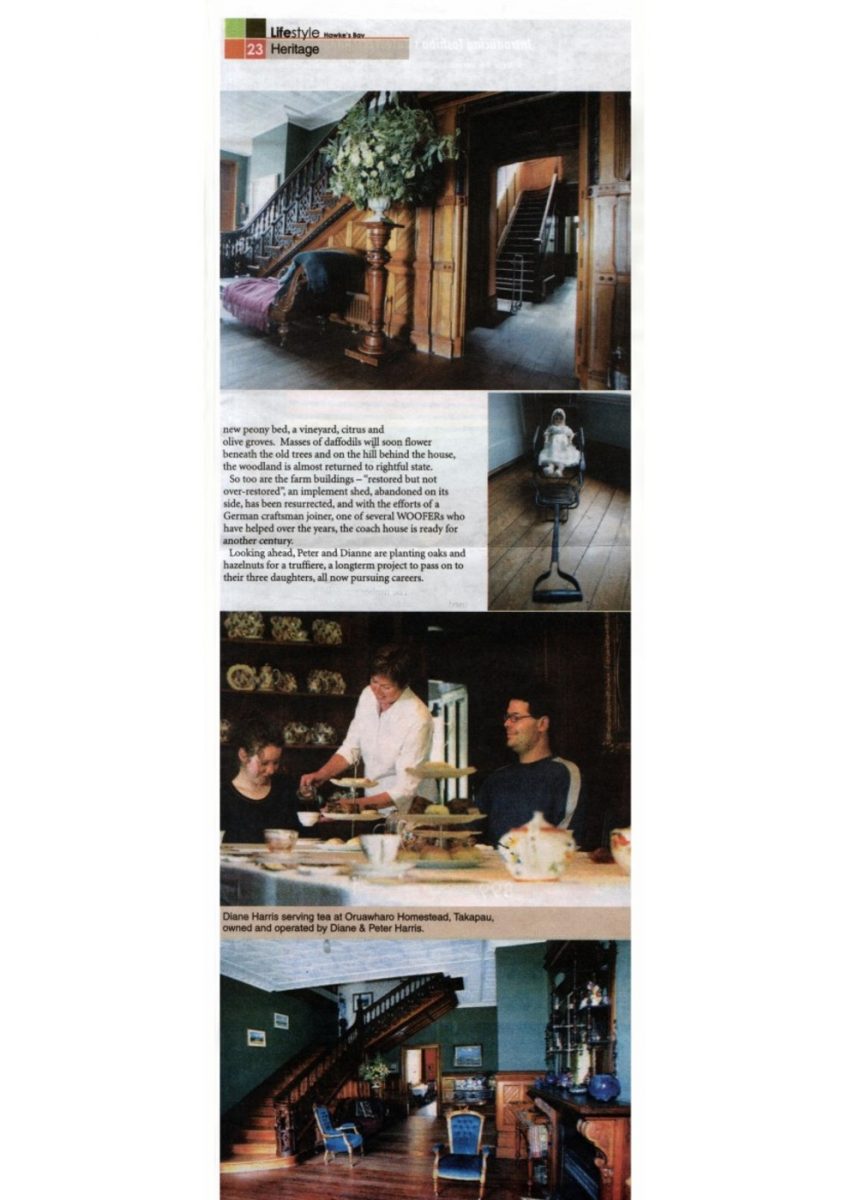Lifestyle Heritage Hawke’s Bay 22
Neither teas nor weddings were on the agenda when the Harrises bought Oruawharo in 2000. They simply wanted more space than at their Devonport home and a new project as Peter bowed out of a highflying career in imaging technology.
“It was to be our retirement folly, a hobby where we could take off to the Pacific for winter,”
Not much of that – the past few years have been dawn-to-dusk work, but there are no regrets.
“It’s completely do-able and if we get it right, the property has a feasible lifespan of 1000 years yet,” he says.
Perhaps though they think longingly of the 12 house staff and eight gardeners who lived-in during the original owners’ day. The disappearance of the staff wing is almost the only change Sydney and Sophia Johnston would notice today.
They completed Oruawharo in 1879, having added to an earlier homestead built by Sydney’s father. The hub of a 27000-acre station, it also recreated England’s gentry world. By the early 1900s they’ had added a billiards room, more bedrooms, and the English-style parkland around the house was flourishing.
Their constant house parties played tennis, croquet, and picnicked, in winter the hunt was entertained with the traditional lavish breakfast and tea. Taking a lead from English manorial villages, part of the property was used to establish Takapau and the Johnstons became ongoing benefactors to the town.
Oruawharo also took part in national life, a World War I territorial army camp there witnessed the birth of the lemon-squeezer, and as a vice regal holiday retreat while the Johnstons made regular trips ‘home’, many a titled lady and gentleman stayed.
Apart from a four-year interlude in the 1960s when the Catholic Church was gifted it by the then owner, Oruawharo has been in family hands its entire life. Not always occupied however, after a personal tragedy in 1953, the family lost heart and a long period of neglect began.
Beyond the scope of the Church to maintain, Oruawharo was repurchased by a family trust in 1970. Idle or tenanted, and subject of two protracted legal wrangles, it limped through the next 30 years, so when the Harrises bought it, it was “hugely derelict”, but fortunately in original condition structurally.
“The timber was solid and we’ve done virtually nothing apart from clean up,” Peter says. Nothing obvious although a small fortune has gone into invisibles – new water and sewage systems, underground power and telephone cable, relining chimneys – a brick-by-brick process still incomplete – Oruawharo has 23 fireplaces.
But most of the work has been on the grounds. With truckloads of overgrown plants cleared, an old-fashioned vegetable garden thrives overlooked by a spruced-up original shed, there is a huge














Do you know something about this record?
Please note we cannot verify the accuracy of any information posted by the community.